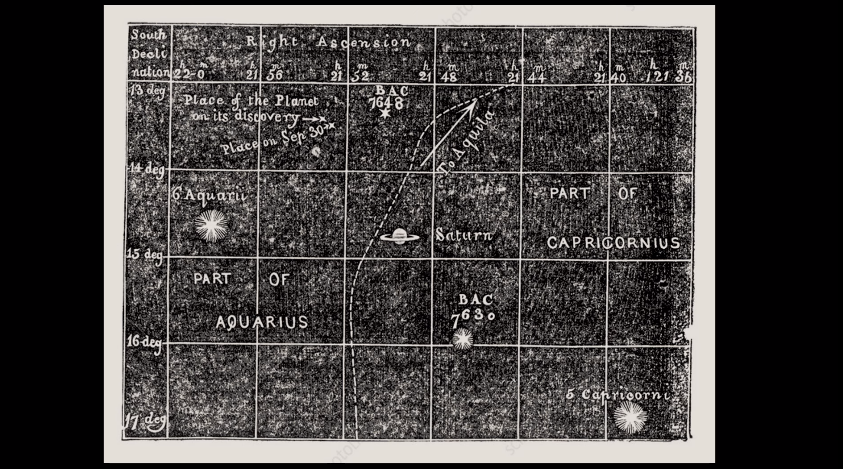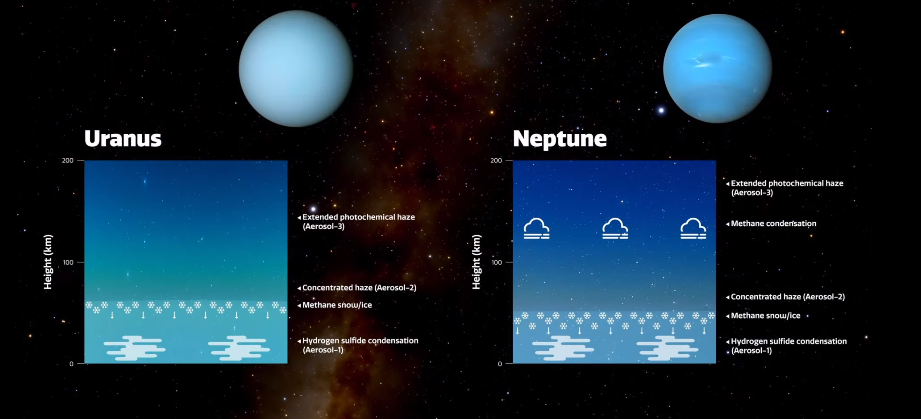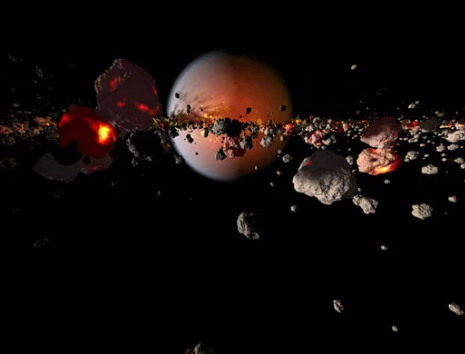Why are Uranus and Neptune blue and why is there a difference in their shades. We often talk about astonishing objects such as black holes or galaxies or billions of light years away from us. But many interesting objects are present in our solar system. But when we talk about our solar system we usually talk about Venus or Mars or Jupiter and Saturn and their moons. There are other interesting things present here such as under studied planets Uranus and Neptune.
Uranus and Neptune
Most of the planets of our solar system have been very well explored by spacecrafts. Rather many lenders are present ever today on mars. Similarly there are orbiters around Jupiter and Saturn with kept on observing them for several years. These planets Uranus and Neptune are on the outer side of our solar system.
Only fly by missions have gone far Uranus and Neptune. In fact Voyager 2 pictures of Uranus and Neptune. In 1986, Voyager 2 passed near Uranus and while passing snapped its pictures, and three years after that is 1989, it passed near Neptune and took pictures of Neptune and its moon Triton.

These are the pictures of Neptune because of which is we know a lot about Neptune and not only Neptune this is the only fly by mission to Uranus also.
Uranus and Neptune Discovered
Uranus was discovered for the first time as a planet in 1781. This was identified by William Herschel who is the musician and also an astronomer. He discovered Uranus and help of his sister ‘Caroline Herschel’.
When the orbit of Uranus was seen it was not understanding, it was a little away from the predicted orbit. So some people said that maybe another planet is present in our solar system after this Uranus and its search continued and then in 1846 Neptune was discovered.

This is an amazing thing because this was only mathematical calculations according to Uranus orbit which predicted that on the whole sky of you take your telescope to this spot, you will see such an object which man has not seen up-till now and it is a planet.
Uranus and Neptune ice giants
Astronomers call Uranus and Neptune ice giants. This does not mean it is made of solid ice but astronomers say this with reference to its composition. Meaning inside it, although they are mostly made of hydrogen and helium.

Uranus and Neptune made by hydrogen and helium a sizable amount of Ammonia, water and hydrocarbons as methane is included in its composition. For astronomers its phase whether it is solid liquid or gaseous is not so important, but behaviour of this material, its transition phase is like ice that is why astronomers call it ice giants.
Astronomers refer to Jupiter and Saturn as gas giants, but Mercury, Venus, Earth, and Mars are classified as terrestrial planets since their surfaces are solid.
Now not only is the composition of Uranus and Neptune identical its size is is also almost equal four times the diameter of Earth and mass is also almost equal about 15 to 17 times the mass of the Earth. Similarly in its subtract structure there is hydrogen and helium on the outer side, in the middle are layers, in which there is water, ammonia and methane ice,

In the center, there is a core of rock and ice meaning when it was formed these things gathered around its core. Many people think that maybe from the methane and hydrocarbon layers inside carbon has separated and converted to diamonds due to pressure. One prediction is also that maybe there is a rainfall of diamond over there and maybe there is a liquid surface of diamonds below are a liquid layer on which solid diamonds are also present.
Uranus and Neptune Differences
Uranus Details
Relative
| Magnitude | +5.68 |
| Angular Size | 3.7″ |
| Distance | 19.08 AU |
Physical
| Equatorial Radius | 25,560 km |
| Polar Radius | 24,970 km |
| Flattening | 0.02293 |
| Mass | 14.5×Earth |
| Gravity | 91.7% Earth |
| Axial Tilt | 97.8° |
Orbital
| Period | 84 years |
| Perihelion | 18.41 AU (Astronomical Unit) |
| Aphelion | 20.19 AU (Astronomical Unit) |
| Inclination | 0.8° |
| Eccentricity | 0.046 |
| Distance From Sun | 19.63 AU (Astronomical Unit) |
Atmospheric
| Surface Pressure | 1,000 kPa |
| Scale Height | 27.7 km |
| Composition
By Volume |
83%hydrogen (H2)
15%helium (He) 2.3%methane (CH4) 0.009%hydrogen deuteride (HD) |
Neptune Details
Relative
| Magnitude | +7.82 |
| Angular Size | 2.3″ |
| Distance | 28.9 AU |
Physical
| Equatorial Radius | 24,760 km |
| Polar Radius | 24,340 km |
| Flattening | 0.01708 |
| Mass | 17.2×Earth |
| Gravity | 115% Earth |
| Axial Tilt | 28.3° |
Orbital
| Period | 165 years |
| Perihelion | 29.94 AU (Astronomical Unit) |
| Aphelion | 30.61 AU (Astronomical Unit) |
| Inclination | 1.8° |
| Eccentricity | 0.011 |
| Distance From Sun | 29.91 AU (Astronomical Unit) |
Atmospheric
| Surface Pressure | 1,000 kPa |
| Scale Height | 19.7 km |
| Composition
By Volume |
80%hydrogen (H2)
19%helium (He) 1.5%methane (CH4) 0.009%hydrogen deuteride (HD) 0.00015% ethane (C2H6) |
There are some differences also between Uranus and Neptune. The tilt of Uranus (its axis) is more than 90°. It is almost 97°. The tilt of earth is 23.5° because of which we have seasons. Uranus is laying on its side in our solar system and in this way it is orbiting the Sun.
What is the reason for it?
The idea is at the beginning of our solar system 4.5 billion years ago an earth sized object collided with it and altered the tilt of Uranus sideways. Because of that you can imagine that one of its side keeps facing the Sun for several years because of its rotation.
Neptune also has special features. We see with the help of Voyager 2 severe storms on Neptune. Its winds are very strong. The speed of its storms is 2400km/hr which are the fastest in the whole solar system.
Why difference in Uranus and Neptune
And why is the difference in Uranus and Neptune. There otherwise appear same

The idea is that maybe the heat at the core of Uranus is not as much as at the core of Neptune even though Neptune is farther away from Uranus. What is its reason? Don’t know. This is a big mystery of astronomers. Why is the core of Uranus less hot compared to the core of Neptune.
Why Uranus and Neptune Blue
Why are Uranus and Neptune blue coloured. Its connection is with its atmosphere. I actually there is mostly hydrogen and helium in its atmosphere but there is some percent methane in it. And their color is because of this methane.
Actually every type of light files on these planets Uranus and Neptune but this methane gas or methane molecules absorb the red light and reflect the blue light (the other visible light). So because of this methane Uranus and Neptune appear blue.
Uranus and Neptune Different Blue Color
Still this is a puzzle that both Uranus and Neptune are similar planets their mass, their size, their composition included the fraction of methane is the same but there is a slight difference in their blue shades.
Behind the reason is why a slight difference in their blue shades that the upper layer of these planets are the same to a large extent. These are the same particles present in in their atmosphere.

But after that deep downwards there is a methane layer and this methane condenses into ice form not water ice form but methane ice form and then its snowfall takes place.
This process is more efficient on Neptune meaning there is more snowfall of methane over there compared to Uranus. This is called haze layer by astronomers and the haze layer is more thick and bigger on Uranus compared to Neptune. And the guess is, because of this the color of Neptune is bright blue compared to the color of Uranus.
Why Snow more on Neptune?
It is probably due to its atmosphere, the speed of its winds because of which methane condenses more efficiently compared to Uranus.

